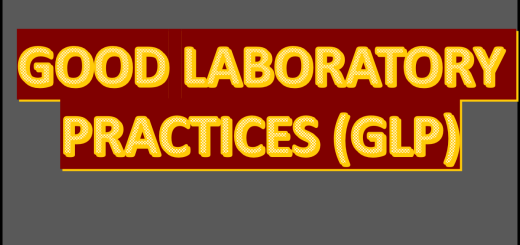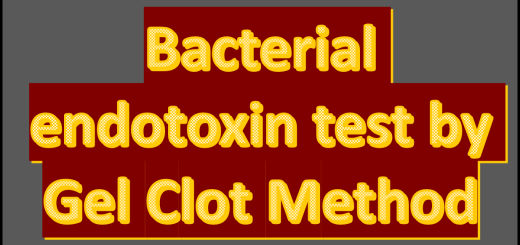Sop for microbial Air Sampler
This Document describes (Standard Operating procedure) Sop for Operation and Maintenance of microbial air Sampler.
Sop for Operation and Maintenance of microbial air Sampler.
I. Purpose & Scope:
- The purpose of this SOP is to lay down the procedure for Operation and Maintenance of microbial air Sampler
- This Standard operating procedure shall be applicable for Operation and Maintenance of microbial air Sampler in the Microbiology section of Quality Control Department
II. Responsibilities:
- All Quality Control and Quality Assurance personnel shall be responsible to follow and implement this SOP.
III : Introduction and Procedural Part:
Principle of Microbial Air Sampler :
Air is aspirated through a perforated lid, and impacted onto the surface of growth media in a standard 90 mm petri dish. Microorganisms impact the culture media and the colonies can be counted after incubation period. The system measures the inflow of air, regulates the aspirated volume to a constant value of 100 lit/min.
Operating Procedure of Microbial Air sampler :
Switch ON/OFF :
-
-
- For switching ‘ON’, Press and hold the ON/OFF Key for about one second.
- For switching ‘OFF’, Press and hold the ON/OFF Key for at least one second, or press the ‘stop’ key on the remote control.
- Starting a sampling program :
-
To start a sampling cycle, proceed as follow,
SAMPL’AIR < SAMPLE > → press enter → SAMPLE < 1000L > → Press enter → 1000 L start → PROGRAM IS STARTED
- Select the ‘Sample’ menu, and then press ‘Enter’.
- Select the program to be started using directional arrow. The chosen program is displayed on the lower line, press ‘Enter’. (Possibility of creating or deleting a program as well).
- The Start screen is displayed to begin the sampling, press ‘Enter’ or the ‘Start’ key from the remote control.
- The other Sampling programs may be deleted or replaced by programs created by the operator (up to 10 sampling programs).
- To select the sampling program you wanted to start, use the directional arrow and confirm your choice by pressing ‘Enter’.
Positioning the Petri dish and starting the sampling :
- Choose the program to be started (1000Lit Volume or 10 min Sampling time)
- Place the sampling head vertically. Pull up the stainless steel grid to remove it from the unit; place the grid on a clean surface.
- Fit the Petri dish on the clips and make sure that dish is placed horizontally.
- The clips help with adjusting the petri dishes in the center above the turbine. Make sure that the dish is properly inserted.
- Remove the Petri dish lid and put it on a clean surface. Place the Sample air lite grid back. The Sampler is ‘ready’ to start a cycle.
- At the end of the sampling, a signal tone sounds and the message “End of sampling” is displayed. Press Enter to stop the signal and go back to the SAMPLE menu for next sampling.
- Remove the impaction grid and close the Petri dish. Place the Petri dish into an incubator for further incubation. Report the details of usage, in Instrument usage record , refer Annexure- I.
- In case of problems occurs during the cycle, the error codes are successively displayed at the end of the cycle. Press ENTER to acknowledge each error message. Some errors may stop.
Counting and Calculation :
- After incubation, count the number “n” of CFU which have grown.
- In order to take into account the probability of having impaction of 2 or more microorganism, an algorithm is applied according to Peto and Powel work.
En = { }
T = Number of holes in the sampling grid (258 holes)
n = Number of numerated colonies
En is the estimated number of viable micro-organisms giving n positive impacts, when using a grid whose number of holes = T.
This formula suggests that the micro-organisms flow stops when a micro- organism reaches the hole ‘n’.
This flow being irregular, the estimated number of particles, when n impacts are observed, has to be equal or superior to En, but inferior to E (n+1).
The adjusted number N is obtained using:
N = {E n + (E n +1 –1)}
- Consult the Table- I for Finding Probable No. of Colonies. Table-I indicates the ‘n’ value (No. of colonies actually numerated) corresponding to ‘N’ (Probable No. of viable impacted microorganisms – either estimated or adjusted).
Table-I
| n | N | n | N | n | N | n | N | n | N | n | N |
| 1 | 1 | 31 | 33 | 61 | 70 | 91 | 112 | 121 | 163 | 151 | 227 |
| 2 | 2 | 32 | 34 | 62 | 71 | 92 | 114 | 122 | 165 | 152 | 229 |
| 3 | 3 | 33 | 35 | 63 | 72 | 93 | 115 | 123 | 167 | 153 | 232 |
| 4 | 4 | 34 | 36 | 64 | 74 | 94 | 117 | 124 | 169 | 154 | 234 |
| 5 | 5 | 35 | 38 | 65 | 75 | 95 | 118 | 125 | 171 | 155 | 237 |
| 6 | 6 | 36 | 39 | 66 | 76 | 96 | 120 | 126 | 173 | 156 | 239 |
| 7 | 7 | 37 | 40 | 67 | 78 | 97 | 122 | 127 | 175 | 157 | 242 |
| 8 | 8 | 38 | 41 | 68 | 79 | 98 | 123 | 128 | 177 | 158 | 245 |
| 9 | 9 | 39 | 42 | 69 | 80 | 99 | 125 | 129 | 179 | 159 | 247 |
| 10 | 10 | 40 | 43 | 70 | 82 | 100 | 127 | 130 | 181 | 160 | 250 |
| 11 | 11 | 41 | 45 | 71 | 83 | 101 | 128 | 131 | 183 | 161 | 252 |
| 12 | 12 | 42 | 46 | 72 | 84 | 102 | 130 | 132 | 185 | 162 | 255 |
| 13 | 13 | 43 | 47 | 73 | 86 | 103 | 131 | 133 | 187 | 163 | 258 |
| 14 | 14 | 44 | 48 | 74 | 87 | 104 | 133 | 134 | 189 | 164 | 260 |
| 15 | 15 | 45 | 49 | 75 | 89 | 105 | 135 | 135 | 191 | 165 | 263 |
| 16 | 17 | 46 | 51 | 76 | 90 | 106 | 137 | 136 | 193 | 166 | 266 |
| 17 | 18 | 47 | 52 | 77 | 91 | 107 | 138 | 137 | 195 | 167 | 269 |
| 18 | 19 | 48 | 53 | 78 | 93 | 108 | 140 | 138 | 197 | 168 | 272 |
| 19 | 20 | 49 | 54 | 79 | 94 | 109 | 142 | 139 | 200 | 169 | 275 |
| 20 | 21 | 50 | 56 | 80 | 96 | 110 | 143 | 140 | 202 | 170 | 278 |
| 21 | 22 | 51 | 57 | 81 | 97 | 111 | 145 | 141 | 204 | 171 | 280 |
| 22 | 23 | 52 | 58 | 82 | 99 | 112 | 147 | 142 | 206 | 172 | 283 |
| 23 | 24 | 53 | 59 | 83 | 100 | 113 | 149 | 143 | 208 | 173 | 286 |
| 24 | 25 | 54 | 61 | 84 | 102 | 114 | 150 | 144 | 211 | 174 | 290 |
| 25 | 26 | 55 | 62 | 85 | 103 | 115 | 152 | 145 | 213 | 175 | 293 |
| n | N | n | N | n | N | n | N | n | N | n | N |
| 26 | 27 | 56 | 63 | 86 | 105 | 116 | 154 | 146 | 215 | 176 | 296 |
| 27 | 29 | 57 | 64 | 87 | 106 | 117 | 156 | 147 | 218 | 177 | 299 |
| 28 | 30 | 58 | 66 | 88 | 108 | 118 | 158 | 148 | 220 | 178 | 302 |
| 29 | 31 | 59 | 67 | 89 | 109 | 119 | 160 | 149 | 222 | 179 | 305 |
| 30 | 32 | 60 | 68 | 90 | 111 | 120 | 161 | 150 | 225 | 180 | 309 |
Precautions during operation of microbial air sampler:
- To prevent fire or shock hazard, do not expose this device to rain.
- Do not try to charge a fully charged battery; this may reduce its performance.
- The battery becomes preferment more quickly if you charge it at room temperature, and when the low battery warning occurs.
- The depth of the agar in the Petri dish should be reproducible; agar surface should be flat and leveled and no present any dryness.
- The total charging time depends on the energy level of the battery. It is recommended to let the Sample air lite loading at least 5 hours after a sampling campaign.
Cleaning and Maintenance of microbial air sampler :
- Air Sampler shall be cleaned after each sampling campaign.
- External surfaces and sampling grid shall be cleaned with 70% IPA in between each sampling.
- The stainless steel impaction grid shall be autoclaved (in Accessories Sterilization Load) between each sampling campaign.
- Do not use oxidizing agent such as hydrogen peroxide when cleaning the unit.
- Do not use bleach on the micro perforated sieves.
Calibration:
- Calibration of the microbial Air Sampler shall be done by external agency, once in a year or after any major maintenance.
Instrument usage Record of microbial Air Sampler
Instrument I.D. : ____________
| Date of Usage | Used for |
Usage time |
Cleaning Status | Done By | Checked By | |
| From | To | |||||
Reviewed By :————————— Verified By :——————-
(Department Head) (QA)



